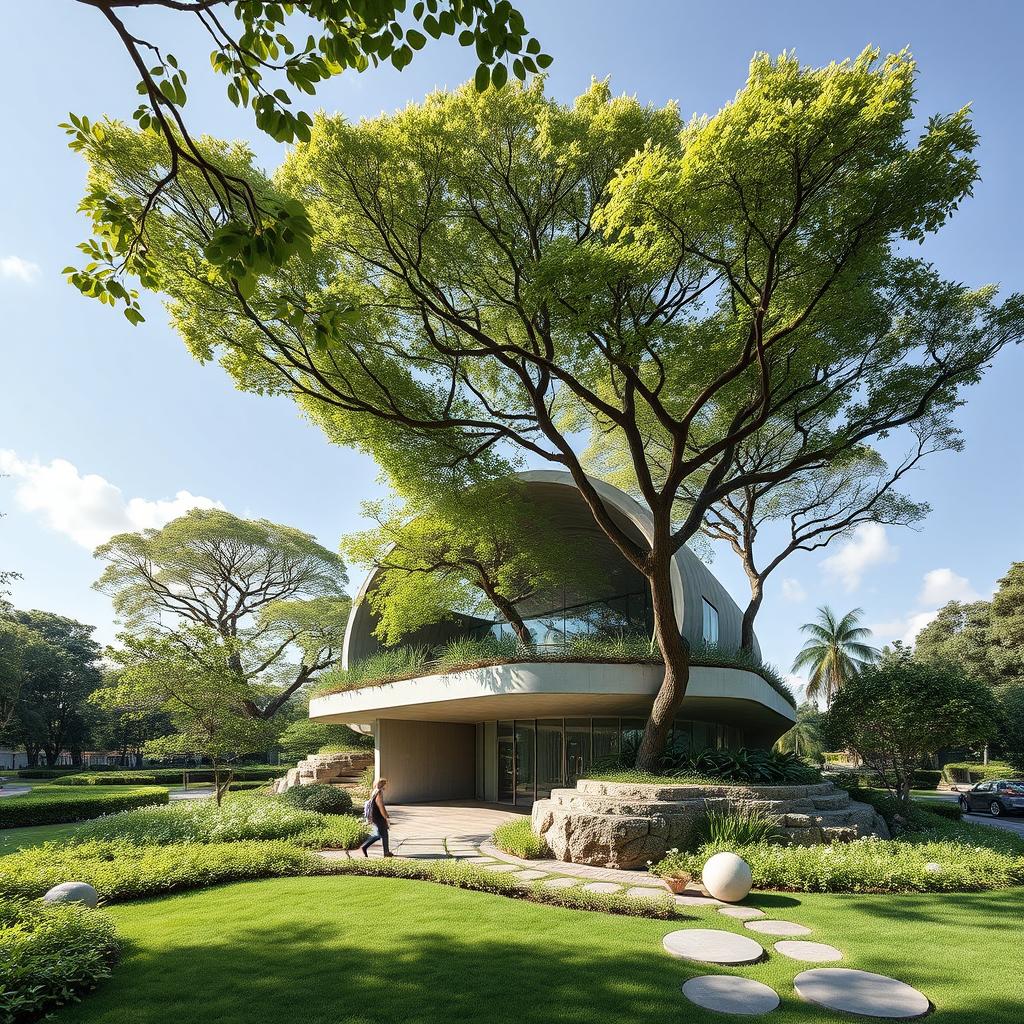
Nature-Based Architecture: Designing with the Earth in Mind
In an era of increasing environmental awareness and the push for sustainable living, nature-based architecture is gaining attention for its ability to harmonize human structures with the natural world. This architectural approach draws inspiration from nature, using principles that not only minimize the environmental impact of buildings but also promote the well-being of inhabitants. So, what exactly is nature-based architecture, and how is it changing the way we design our built environments?
What is Nature-Based Architecture?
Nature-based architecture, also known as biophilic design or ecological architecture, focuses on integrating natural elements into the design of buildings and urban spaces. It goes beyond simply placing plants indoors or using eco-friendly materials—it seeks to create a seamless connection between people and nature through thoughtful design choices.
The idea behind nature-based architecture is rooted in the understanding that humans are innately connected to nature. Studies have shown that exposure to natural elements—whether it’s sunlight, plants, water, or views of the outdoors—has a profound impact on mental health, productivity, and overall well-being. By designing spaces that embrace these elements, architects can create environments that foster a sense of calm, reduce stress, and promote a healthier lifestyle.
Key Principles of Nature-Based Architecture
-
Biophilic Design Biophilic design is at the core of nature-based architecture. It emphasizes the use of natural forms, materials, and processes to create spaces that enhance the human experience. This could mean incorporating green walls, indoor gardens, or using natural ventilation to improve indoor air quality.
-
Use of Local and Sustainable Materials Nature-based architecture often involves the use of locally sourced, renewable materials such as bamboo, reclaimed wood, or stone. This reduces the carbon footprint of construction and supports local ecosystems. These materials also contribute to creating a natural aesthetic, blending the building into its surroundings.
-
Designing for Natural Light and Ventilation Maximizing natural light and airflow is a key strategy in nature-based architecture. Buildings are often designed with large windows, skylights, and open spaces that allow sunlight to penetrate deep into the interior. Natural ventilation reduces the reliance on mechanical HVAC systems, leading to more energy-efficient buildings.
-
Integration with the Landscape One of the most significant aspects of nature-based architecture is its seamless integration with the surrounding landscape. Instead of dominating the environment, buildings are designed to complement it. This could mean positioning a building to follow the natural contours of the land, or incorporating elements such as green roofs or living walls to enhance biodiversity.
-
Water and Energy Efficiency Water conservation and energy efficiency are central tenets of nature-based architecture. Rainwater harvesting systems, greywater recycling, and energy-efficient technologies like solar panels and passive solar design are often used to reduce the environmental impact of buildings.
Iconic Examples of Nature-Based Architecture
Many innovative buildings around the world showcase the potential of nature-based architecture:
-
The Bosco Verticale (Vertical Forest) in Milan, Italy, is a prime example of nature-based architecture in an urban setting. This pair of residential towers is covered in over 20,000 trees, plants, and shrubs, creating a vertical forest that improves air quality, reduces energy consumption, and fosters biodiversity in the city.
-
The Eden Project in Cornwall, UK, is another landmark. This massive ecological complex consists of biomes that house thousands of plant species from around the world. Its design mimics natural ecosystems, creating a space that educates visitors about the importance of biodiversity and conservation.
-
Fallingwater by Frank Lloyd Wright, one of the most famous examples of nature-inspired architecture, blends seamlessly into its forested surroundings. Built over a waterfall, the house is designed to be in harmony with the landscape, with elements like cantilevered terraces that mimic the natural rock formations.
The Benefits of Nature-Based Architecture
-
Health and Well-Being Nature-based architecture enhances the health and well-being of building occupants. Studies have shown that exposure to natural light, views of nature, and green spaces can reduce stress, improve mood, and even boost cognitive function. In workspaces, this translates to higher productivity and job satisfaction, while in homes and healthcare settings, it fosters relaxation and recovery.
-
Environmental Sustainability By prioritizing renewable materials, energy efficiency, and the preservation of ecosystems, nature-based architecture helps reduce the environmental impact of buildings. Green roofs and walls, for example, provide natural insulation, absorb rainwater, and promote biodiversity, all while reducing the heat island effect in urban areas.
-
Climate Resilience Nature-based architecture plays a vital role in climate resilience. Buildings designed with natural principles are better equipped to handle environmental challenges such as flooding, heat waves, and changing weather patterns. Incorporating green infrastructure like wetlands, forests, or permeable pavements can help mitigate the impact of climate change on cities.
-
Community and Social Connection Nature-based architecture encourages community engagement and social interaction by creating shared green spaces and public parks. These spaces act as natural gathering points, fostering a sense of community and providing areas for recreation, relaxation, and connection to nature.
The Future of Nature-Based Architecture
As urbanization continues to expand, the need for sustainable, nature-integrated designs will only grow. Architects and urban planners are increasingly recognizing the value of nature-based solutions in addressing environmental challenges and improving the quality of life in cities.
The future of nature-based architecture will likely see more buildings designed with living ecosystems in mind, blending nature and technology to create smart, sustainable cities. Green infrastructure, regenerative design, and the use of renewable energy will play key roles in shaping the built environments of tomorrow.
Conclusion
Nature-based architecture represents a shift toward designing with the Earth in mind. By integrating natural elements, prioritizing sustainability, and fostering human-nature connections, this approach offers a blueprint for healthier, more resilient, and environmentally responsible living spaces. As we look toward the future, the harmonious relationship between architecture and nature will be essential in creating a more sustainable and livable world.